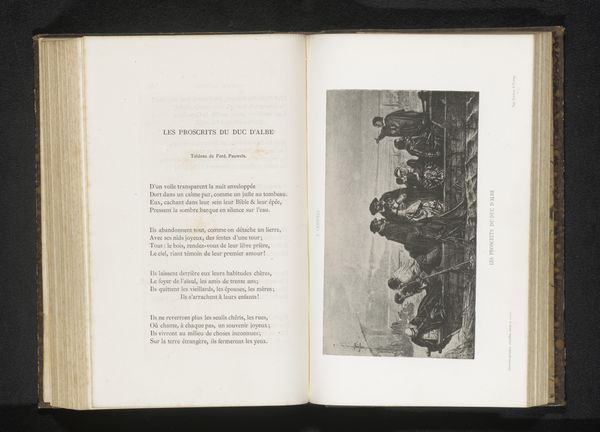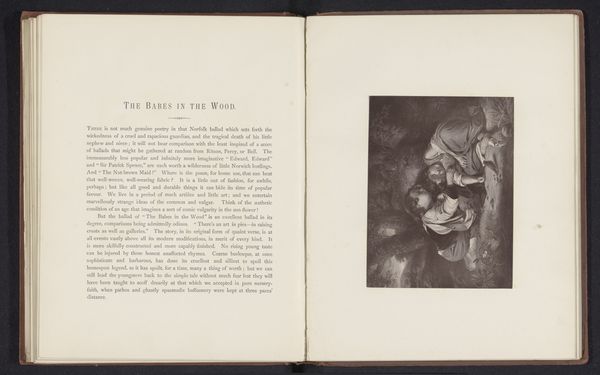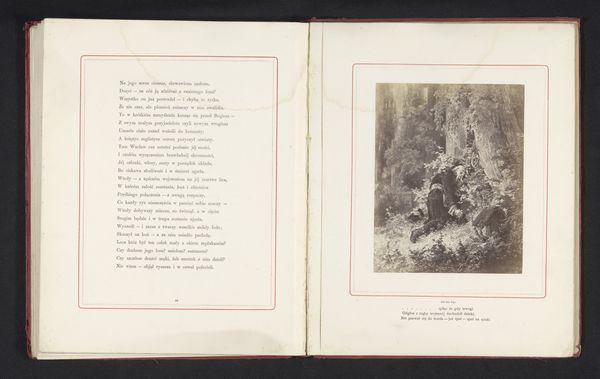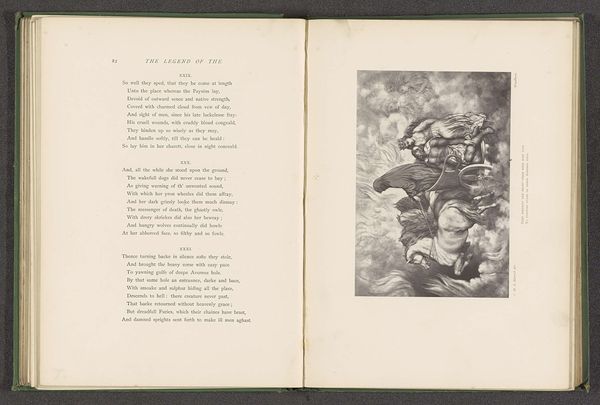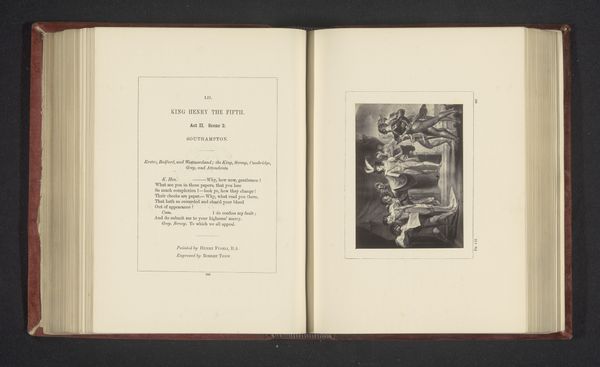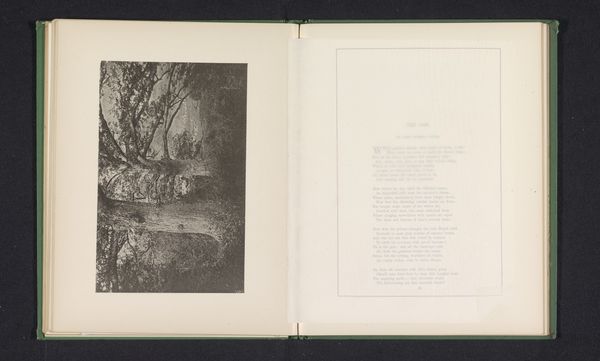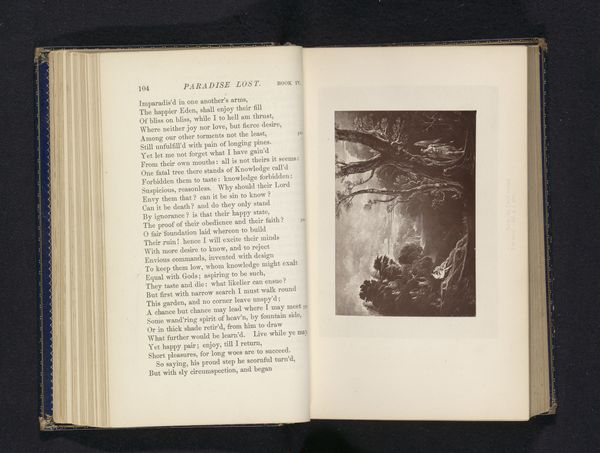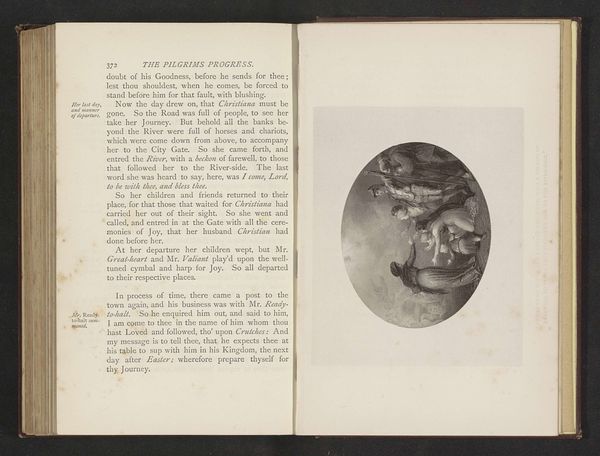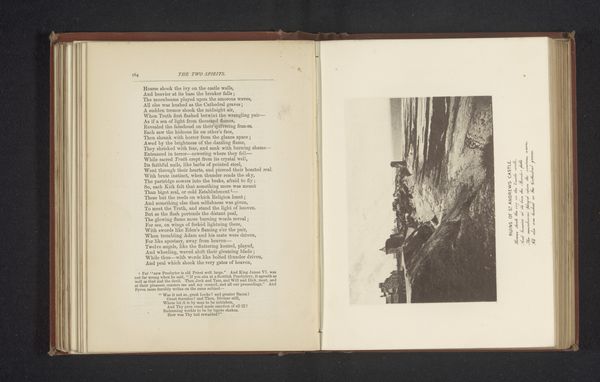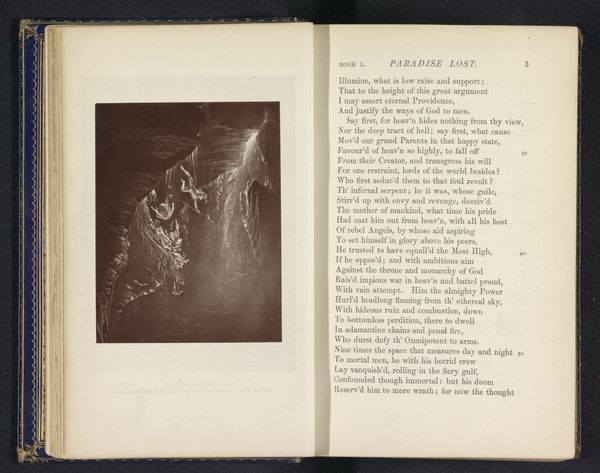
Fotoreproductie van een prent naar een schilderij, voorstellende een kind met een ezelveulen in de armen before 1871
0:00
0:00
Dimensions: height 115 mm, width 146 mm
Copyright: Rijks Museum: Open Domain
Editor: Here we have a reproduction of a print after a painting. It's titled 'Fotoreproductie van een prent naar een schilderij, voorstellende een kind met een ezelveulen in de armen' - which translates to "Photographic reproduction of a print after a painting, representing a child with a donkey foal in his arms." It’s dated before 1871 and done by an anonymous artist. The photographic element definitely gives it an interesting feel...almost like a documentation of a romantic painting. What strikes you about it? Curator: Considering this as a photographic reproduction is key. The early history of photography is intertwined with documenting and disseminating art. The fact it's a photo *of* a print, made after a painting, speaks volumes about how visual culture was spread and valued at the time. Notice how this elevates a somewhat pastoral scene into something worthy of preservation and wider consumption through new technologies. Do you see it differently now? Editor: I do! It’s like a chain of representation, each stage changing how the image is consumed by its audience. Was this sort of practice common? What were the social implications of reproducing artwork via photography like this? Curator: Mass reproduction drastically changed how people experienced art. Before photography, prints were already making art more accessible to a broader public. However, photography offered what was perceived as an objective, almost scientific record. This raises questions about authenticity, ownership, and the very definition of art. Consider who had access to these images, and how they might have used them to reinforce or challenge existing social hierarchies. Editor: So, it's not just about the charming subject matter but also about the democratisation of art facilitated by photography? Curator: Exactly. The “romantic” style becomes less about idealized rural life and more about the power dynamics inherent in art's accessibility and consumption. It invites us to consider the public role of images and the politics embedded within them. Editor: That gives me a lot to think about. It’s amazing how a seemingly simple image reveals so much about social and cultural history once you start digging. Thanks! Curator: Indeed. Looking beyond the surface always deepens our understanding. I learned something too.
Comments
No comments
Be the first to comment and join the conversation on the ultimate creative platform.
